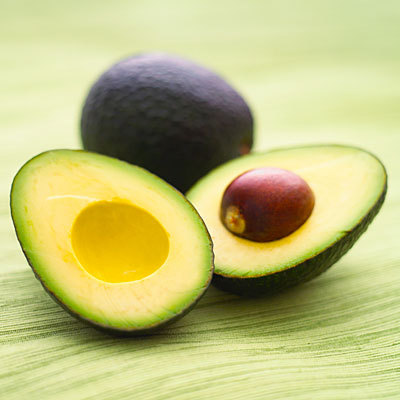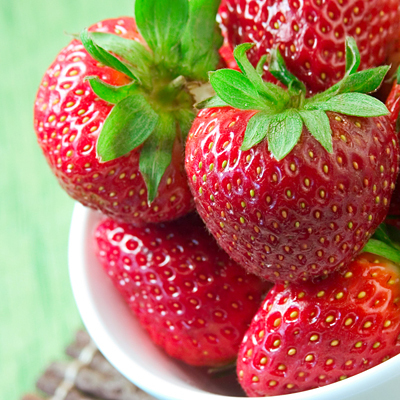Why do experts recommend waiting to introduce cow's milk until a baby is 12 months old?
There are several reasons to delay the introduction of cow's milk until your baby reaches his first birthday.
Babies
can't digest cow's milk as completely or easily as breast milk or
formula. Cow's milk contains high concentrations of protein and
minerals, which can tax your baby's immature kidneys. In addition, cow's
milk doesn't have the right amounts of iron, vitamin C, and other
nutrients for infants. It may even cause
iron-deficiency anemia
in some babies, since cow's milk protein can irritate the lining of the
digestive system, leading to blood in the stools. Finally, cow's milk
doesn't provide the healthiest types of fat for growing babies.
Once your child's ready to digest it, though, milk becomes an important part of his diet. It's a rich source of
calcium,
which builds strong bones and teeth and helps regulate blood clotting
and muscle control. And it's one of the few sources of vitamin D, which
helps the body absorb calcium and is crucial for bone growth. Almost all
milk in the U.S. is fortified with vitamin D. (Ultraviolet rays are
another source, but they're blocked by sunscreen.)
Milk also
provides protein for growth, as well as carbohydrates, which will give
your child the energy he needs to toddle all day. And if your child gets
enough calcium from the get-go, there's evidence that he'll have a
lower risk of high blood pressure, stroke, colon cancer, and hip
fractures later in life.
How much milk should my toddler drink?
According
to the American Academy of Pediatrics (AAP), most kids will get enough
calcium and vitamin D if they drink 16 to 20 ounces (2 to 2 1/2 cups) of
cow's milk a day. Offer 1-year-olds whole milk (unless they're at high
risk for obesity).
Don't offer more than 3 cups of milk a day or
your child may not have room for the other foods she needs to round out
her diet. If your toddler's still thirsty, offer
water.
Can I give my toddler fat-free or reduced-fat milk?
In most
cases, not yet. The AAP recommends whole milk for 1-year-olds. Children
this age need the higher fat content of whole milk to maintain normal
weight gain and to help the body absorb vitamins A and D. And nonfat
milk provides too high a concentration of protein and minerals for
children this age. Once your child turns 2, you may decide to switch him
to reduced-fat or nonfat milk as long as he's growing well.
Possible
exceptions: If you're overweight or obese, or have a family history of
obesity, high cholesterol, or cardiovascular disease, your child's
doctor may recommend giving him reduced-fat milk (2 percent) after age
1.
My toddler doesn't seem to want cow's milk. Any tricks I can try?
Some
toddlers greedily gulp cow's milk right off the bat. But because milk
has a different texture, taste, and even temperature than breast milk,
some kids are hesitant to make the switch.
If that's the case for
your toddler, try mixing milk with some breast milk or formula at first
(say, one part milk and three parts of her usual stuff). Then slowly
shift the ratio until she's drinking 100 percent milk. It may also help
to serve the milk at room temperature.
Meeting the minimum
requirement of 2 cups can be a challenge if your child doesn't care for
milk. But there are many ways to get milk into your child's diet: Add it
to her cereal. Serve yogurt, cottage cheese, pudding, custard, or
shakes for snacks. Make soup with milk rather than water. Add a
milk-based sauce or gravy to casseroles.
What if my child doesn't like any dairy products? What if he has an allergy or if we're vegans?
If
your child isn't getting enough calcium and vitamin D from milk and
other dairy products, perhaps because he can't tolerate them or your
family is vegan, your pediatrician will probably recommend calcium and
vitamin D supplements.
Should I buy organic or hormone-free milk for my child?
There's
no conclusive evidence that these kinds of milk are better for
children, but there's no harm in them. (Organic milk does tend to be
more expensive.) Read up on
growth hormones in milk and
organic foods to help you make a decision.
The
AAP warns against giving your child "raw" or unpasteurized milk,
though. Without pasteurization, milk may contain harmful bacteria or
parasites that can cause serious illness or even death.
Could my child have a milk allergy?
True allergies
to cow's milk are relatively uncommon. Only 2 to 3 percent of children
are allergic to milk, according to the AAP, and almost all of them
outgrow it by age 3. (Learn the difference between a milk allergy and
lactose intolerance.)
If
your child drank cow's-milk-based formula as a baby without any
problems, you can rest assured that she'll have no problems tolerating
regular cow's milk. Even babies who were exclusively breastfed for the
first year can usually handle regular cow's milk because they've been
exposed to cow's milk protein in their mother's milk (unless their
mother avoided all dairy).
If your child drank soy formula because
your doctor recommended it, though, check with your doctor before
starting her on cow's milk. Your doctor may recommend that you start
with a soy beverage that's been fortified with vitamin D and calcium.
(See what our experts say about giving
soy milk or
rice milk to a child who won't drink cow's milk.)
The main symptoms of milk allergy are blood in the stool,
diarrhea, and
vomiting. If your child also develops
eczema,
hives,
a rash around the mouth and chin, chronic nasal stuffiness, a runny
nose, cough, wheezing, or breathing difficulties, it could be a sign
that the respiratory system is being affected by a milk allergy. If your
toddler develops any of these symptoms, talk with her doctor.
If
your child appears to have sudden and severe problems with breathing or
swallowing, take her to the nearest emergency room. She may be having a
life-threatening allergic reaction.
If
it turns out that your toddler is allergic to cow's milk, you'll want
to be careful to avoid foods such as cottage cheese, condensed or
evaporated milk, ice cream, yogurt, margarine that contains milk,
butter, milk chocolate, and powdered milk. Thanks to a law passed in
2004, all allergens must be clearly marked on food products – in this
case, the label will say "milk."
Note: This article was reviewed by Nancy Hudson, M.S., R.D., a nutrition educator at the University of California at Davis.






























 Avocados
are the only fruit with monounsaturated "good" fats that may lower
"bad" LDL cholesterol, which can harm the heart. The avocado is also a
super source of soluble fiber, which helps prevent constipation. And
it's full of vitamin E, which scientists think may help to prevent
cancer.
Avocados
are the only fruit with monounsaturated "good" fats that may lower
"bad" LDL cholesterol, which can harm the heart. The avocado is also a
super source of soluble fiber, which helps prevent constipation. And
it's full of vitamin E, which scientists think may help to prevent
cancer. Loaded
with vitamins, minerals, and antioxidants (substances that sometimes
slow the body's release of cell-damaging chemicals), blueberries may
help lower cholesterol, sharpen memory, and fight certain cancers.
Whether fresh or frozen, these little fruits offer big health benefits.
Loaded
with vitamins, minerals, and antioxidants (substances that sometimes
slow the body's release of cell-damaging chemicals), blueberries may
help lower cholesterol, sharpen memory, and fight certain cancers.
Whether fresh or frozen, these little fruits offer big health benefits. These
mild-tasting whole grains prevent blood sugar spikes and crashes, keep
you feeling full longer, and help your body get rid of bad cholesterol.
These
mild-tasting whole grains prevent blood sugar spikes and crashes, keep
you feeling full longer, and help your body get rid of bad cholesterol. This
cold-water fish contains healthful fats known as omega-3s that can
lower the risk of heart disease. These nutrients may also help improve
mood and prevent memory loss.
This
cold-water fish contains healthful fats known as omega-3s that can
lower the risk of heart disease. These nutrients may also help improve
mood and prevent memory loss. Spinach is an excellent source of iron, calcium, folic acid, and vitamins A and C – all great for growing bones and brains.
Spinach is an excellent source of iron, calcium, folic acid, and vitamins A and C – all great for growing bones and brains. Sweet
potatoes are packed with vitamins B, C, and E as well as calcium,
potassium, and iron, They're also rich in complex carbohydrates and
fiber, which keeps digestion moving along.
Sweet
potatoes are packed with vitamins B, C, and E as well as calcium,
potassium, and iron, They're also rich in complex carbohydrates and
fiber, which keeps digestion moving along. Rich
in calcium and a good source of protein, yogurt helps build strong
bones and teeth. It may also aid digestion and fight bad bacteria in the
gut.
Rich
in calcium and a good source of protein, yogurt helps build strong
bones and teeth. It may also aid digestion and fight bad bacteria in the
gut.
